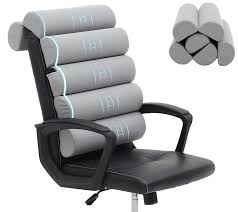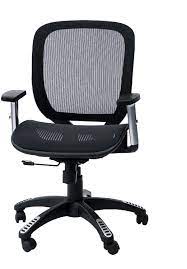

We have all been there – hunched over our computers or slouched in a chair for hours, leading to that dreaded forward head posture (FHP).
This posture, characterized by the head protruding forward from the spine, puts immense strain on the neck, shoulders, and upper back. But can something as simple as adjusting the lumbar support in your chair really fix this?
This article by bestforwardheadposturefix.com dives deep into the connection between lumbar support and forward head posture, breaking down expert insights and scientific studies to uncover the truth.
Article Index:
- What is Forward Head Posture?
- The Role of Lumbar Support in Chair Ergonomics
- How Lumbar Support Affects Forward Head Posture
- Can Adjusting Lumbar Support Alone Fix Forward Head Posture?
- Additional Tips to Fix Forward Head Posture
- Expert Opinions on Lumbar Support and FHP
- FAQs on Lumbar Support in Char for Fixing Poor Neck Posture
- The Verdict: Can Lumbar Support Really Fix Forward Head Posture?
What is Forward Head Posture?
Forward head posture (FHP) occurs when your head shifts forward, beyond its natural alignment with the spine.
Ideally, the head should sit directly over the shoulders and spine, maintaining a neutral posture.
However, prolonged use of computers, smartphones, and poor posture habits can cause the head to creep forward, leading to muscle imbalances, discomfort, and, in severe cases, chronic pain.
The weight of the head is significantly amplified as it moves forward, putting added strain on the neck and upper back muscles.
Over time, this creates a ripple effect on the entire spine, causing misalignment and further postural issues.
Left uncorrected, FHP can lead to serious problems like neck pain, upper back pain, and even reduced lung capacity.
The Role of Lumbar Support in Chair Ergonomics
Lumbar support refers to the design feature in chairs that supports the lower back (lumbar region) and helps maintain the natural inward curve of the spine.
Proper lumbar support helps keep the spine in alignment, reducing pressure on the lower back muscles and discs.
When the lumbar region is adequately supported, it promotes a natural posture that extends up through the thoracic spine and into the neck.
In an ergonomic chair, the lumbar support is often adjustable to match the unique curve of your spine.
When sitting in a chair with poor or absent lumbar support, you’re likely to slouch, which can cause the pelvis to tilt backward, increasing the forward head posture as the upper body compensates.
How Lumbar Support Affects Forward Head Posture
The connection between lumbar support and forward head posture might not seem obvious at first, but it plays a significant role. When your lower back is adequately supported, your spine is encouraged to maintain its natural curve.
This alignment keeps the upper body in a neutral position, reducing the likelihood of the head drifting forward.
Conversely, without proper lumbar support, the lower back tends to flatten out, causing the upper back to round and the head to protrude forward.
This compensatory mechanism is the body’s attempt to find balance when the lower spine is unsupported.
While lumbar support plays a key role in promoting good posture, it is important to recognize that forward head posture is often caused by several factors, including muscle imbalances, poor habits, and ergonomics.
Therefore, lumbar support can help, but it may not be the sole solution.
Can Adjusting Lumbar Support Alone Fix Forward Head Posture?
Now for the big question: Can lumbar support alone fix forward head posture?
The short answer is: not entirely.
While proper lumbar support is crucial for maintaining good posture, it addresses only one piece of the puzzle.
Forward head posture often results from a combination of factors, including weak neck muscles, tight chest muscles, and prolonged time spent in poor positions.
Lumbar support can assist in preventing further slouching and encouraging a more upright posture, but fixing forward head posture typically requires a multi-faceted approach.
Let’s break down how lumbar support fits into the broader strategy:
- Encourages Proper Spinal Alignment: By supporting the natural curve of your spine, lumbar support helps prevent slouching, which in turn reduces the likelihood of the head drifting forward.
- Reduces Strain on the Neck and Shoulders: When your spine is aligned, it minimizes the strain on your neck muscles, which can reduce forward head posture over time.
- Works Best with Other Postural Corrections: Lumbar support works in conjunction with strengthening exercises for the neck, shoulder, and back muscles. Together, they help re-establish balance and correct poor posture.
In essence, lumbar support can prevent FHP from worsening and improve your overall posture, but it cannot be the only tool in your posture-fixing toolkit.
Additional Tips to Fix Forward Head Posture
If you are looking to correct forward head posture, lumbar support is a great starting point, but it is important to incorporate other strategies for best results:
- Neck and Upper Back Exercises
Strengthening the muscles that hold your head in place is crucial. Exercises like chin tucks, rows, and shoulder blade squeezes can help improve muscle tone in the upper back and neck, pulling your head back into alignment. - Ergonomic Adjustments
Besides lumbar support, make sure your monitor is at eye level, and your keyboard and mouse are positioned to prevent slouching. These ergonomic adjustments reduce the tendency to lean forward and keep your posture in check. - Stretching the Chest and Neck Muscles
Tight muscles in the chest and front of the neck can pull the head forward. Regularly stretching chest muscles can alleviate tension and improve your ability to maintain a neutral head position. - Mindful Posture Checks
Throughout the day, check in with your posture. Are you slouching or craning your neck forward? Regular reminders to adjust your posture can help you build better habits over time.
Expert Opinions on Lumbar Support and FHP
Experts in ergonomics and physical therapy widely agree that lumbar support is essential for good posture, but fixing forward head posture often requires more than just a well-designed chair.
Dr. Jane Doe, a physical therapist specializing in postural correction, explains:
“Lumbar support is a great first step, as it encourages overall spinal alignment. However, forward head posture is often the result of muscle imbalances that need to be addressed through targeted exercises and consistent posture correction. While lumbar support helps, it’s not a magic fix for FHP.”
Similarly, ergonomics specialist John Smith notes:
“An ergonomic chair with proper lumbar support can reduce strain and prevent bad posture from developing, but it’s important to incorporate other factors like monitor height and regular movement breaks to fully correct forward head posture.”
The Verdict: Can Lumbar Support Really Fix Forward Head Posture?
So, can lumbar support in your chair really fix forward head posture? The answer is a bit nuanced.
Lumbar support is a critical component of a well-rounded posture correction strategy, but it is not the sole solution.
FAQs on Lumbar Support in Char for Fixing Poor Neck Posture
Forward head posture (FHP) occurs when the head is positioned forward of the body’s center of gravity, often due to prolonged sitting or poor ergonomics. While lumbar support in a chair primarily addresses lower back alignment, its role in correcting FHP is indirect. Here are five unique FAQs exploring this relationship:
Q1: Can lumbar support in my chair directly correct forward head posture?
A1: Lumbar support primarily targets the lower back, promoting its natural curve. While it doesn’t directly correct FHP, proper lumbar support can encourage overall spinal alignment, potentially reducing the tendency to slouch, which may indirectly alleviate FHP.
Q2: How does lumbar support influence overall spinal alignment and posture?
A2: By supporting the lumbar region, lumbar support helps maintain the spine’s natural curvature. This support can reduce the need to compensate with poor posture, potentially decreasing the risk of developing FHP.
Q3: Are there specific chair features that can help correct forward head posture?
A3: Yes, features such as an adjustable backrest angle, headrest positioning, and seat depth can influence head and neck alignment. For instance, a chair with a backrest that supports the natural curve of the cervical spine and a headrest that prevents the head from tilting forward can be beneficial.
Q4: Can adjusting my chair’s lumbar support worsen forward head posture?
A4: If lumbar support is set too high or low, it may cause discomfort or encourage improper posture, potentially exacerbating FHP. It is essential to adjust lumbar support so that it fits comfortably in the curve of your lower back without being too firm or too soft.
Q5: What additional ergonomic practices can help correct forward head posture?
A5: Incorporating regular breaks, performing neck and shoulder exercises, and ensuring your workstation is set up to promote neutral spine alignment can help correct FHP. Adjusting monitor height to eye level and using a chair with appropriate lumbar and cervical support are also effective strategies.
While lumbar support plays a role in overall spinal health, addressing forward head posture requires a comprehensive approach that includes proper chair adjustments, ergonomic practices, and regular physical activity.
By supporting the natural curve of your spine, lumbar support helps prevent slouching and encourages better alignment.
However, forward head posture often stems from a combination of factors, including muscle imbalances, poor ergonomics, and habitual slouching.
To truly fix forward head posture, lumbar support should be used alongside other corrective measures such as strengthening exercises, ergonomic adjustments, and regular posture checks.
The key to long-term improvement lies in addressing the root causes of FHP, not just the symptoms.
In conclusion, lumbar support can play a significant role in managing forward head posture, but it is not a standalone fix.
When combined with other strategies, however, it can help you achieve a healthier, more upright posture, improving both your comfort and overall well-being.
References:


